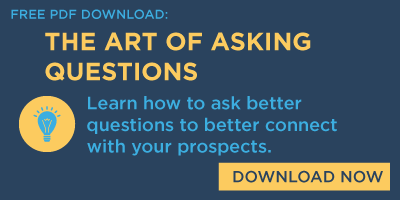
Is it possible to sell faster by talking less?
Absolutely.
When sellers rely more on listening — active listening to be specific — their ability to understand client needs throughout the sales process accelerates. This not only gives sellers an edge in crafting unique solutions for each client, but it also helps sellers discern early on if a client is the right fit for their product before investing large amounts of time with them.
Active listening is a skill that can be learned and benefits both sellers and clients alike.
What is Active Listening?
There are two broad categories of listening — passive and active.
Passive listening, as its name suggests, is taking in the words someone is saying but not really paying attention to the meaning of what is being communicated. It’s roughly synonymous with hearing.
In sales, passive listening takes place when a seller is hearing the words being spoken and waiting for the prospect to pause so they can jump in and talk.
Active listening, on the other hand, takes an intentional approach to listening, observing nonverbal cues, and providing feedback to the speaker to show the message was received and understood. The goal of active listening is to learn.
When a seller is focused on what a prospect is saying, and reflects back the key points to confirm they understand correctly, they are engaged in active listening.
Benefits of Active Listening
Active listening has a positive impact on both the seller (the listener) and the prospect (the speaker).
For sellers, active listening helps them:
- Establish credibility as a trusted partner
- Qualify, or disqualify, leads quickly
- Uncover specific client needs before crafting a solution
For prospects, working with a seller who practices active listening helps them:
- Feel heard, seen, and valued
- Have confidence that the solution will meet their needs
- Partner with the seller to solve a problem
How to Practice Active Listening
Active listening requires a sharp focus on the speaker.
The average person speaks at a rate of 125 words per minute, while the human brain has the capacity to understand 400 words per minute. Since listening uses only a fraction of our mental capacity, our minds can easily wander if we're not focused on the words, meaning, and emotions being expressed.
- Try this: In your next prospecting meeting, ask your first question and be all-in listening to what the prospect says. Don’t let your mind wander to your agenda or goals for the meeting. Instead, keep bringing your focus to the words being spoken and allow yourself to be surprised by something you learn from their response.
Listen with your eyes, posture, and facial expressions
Active listening requires much more than just our ears. Maintaining eye contact while the prospect is speaking, keeping an open body posture, and nodding to show understanding are all ways to engage the rest of your body while listening.
- Try this: Pick one area you want to improve on – eyes, posture, non-verbal expressions – and practice that during your next meeting. Bonus points if you practice with a colleague first and ask for feedback on how it went!
Repeat what you heard them say
A key component of active listening is letting the speaker know what they are saying is being heard and valued. An effective way to do this is by providing feedback to them that shows understanding.
- Try this: After a prospect has shared a particular problem they are facing, pause to reflect back what you heard. Some helpful phrases include:
o “I heard you say that x is really challenging for your business this year. How has that been for you?”
o “It sounds like x, y, z, are the main challenges for you right now. Did I get that right?”
o “Let me make sure I understand what you are saying…”
Before you interject, try asking a clarifying question first
For many sellers, there is a natural temptation to interrupt a client to share about product features or benefits you can offer them as they are describing their problems. Instead of interjecting, what might happen if you asked a clarifying question instead?
- Try this: Challenge yourself to ask a clarifying question in a moment when you would normally start talking about the product or how you can help. Examples include:
o “When did you first notice this problem?”
o “Have you found anything that has helped with this problem?”
o “Can you tell me more about this problem?”
Listen for how they say it
An estimated 93% of our communication is conveyed through facial expressions and tone of voice. When practicing active listening with a prospect, pay attention to when they are excited or have a lot of energy in their words. Conversely, take note of times in the conversation where their energy or facial expressions drop — those are important signals to help you understand all of what they are saying, or not saying.
- Try this: Make a (discreet) note of times in the conversation when you notice a nonverbal cue. You don’t have to know what it means in real-time, but the more you train your brain to pick up on these signals, the more information you will learn from your prospects.
Conclusion
With a little practice, any seller can become more adept at active listening and add one more tool to their selling process. For more tips on how to ask questions, check out these 3 tips.





